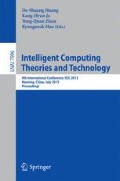Abstract
Most of these methods succeeded to achieve the invariance against object translation, rotation and scaling, but that could not neutralize the bright background effect and non-uniform light on the quality of the generated features. To eliminate the limit that the recent subspace learning methods for facial feature extraction are sensitive to the variations of orientation, position and illumination in capturing palmprint images, a novel palmprint feature extraction approach is proposed. Palmprint images are decomposed into a sequence of binary images using a Modified Pulse-Coupled Neural Network (M-PCNN), and then the information entropy of each binary image are calculated and regarded as features. A classifier based Support Vector Machine (SVM) is employed to implement recognition and classification. Simultaneously, it overcomes the disadvantage of standard PCNN model with high number of parameters. Theoretical and experimental results show that the proposed approach is robust to the variations of orientation, position and illumination conditions in comparison with other methods based subspace.
Access this chapter
Tax calculation will be finalised at checkout
Purchases are for personal use only
Preview
Unable to display preview. Download preview PDF.
References
Badrinath, G.S., Gupta, P.: Palmprint based recognition system using phase-difference information. Future Generation Computer Systems 28, 287–305 (2012)
Yuan, W.Q., Gu, Z.H.: Research on feature selection method based on five classes of palmprint principal lines on the whole palm. Chinese Journal of Scientific Instrument 33, 942–948 (2012) (in Chinese)
Zhang, D., Kong, W.K., You, J., Wong, M.: Online palmprint identification. Pattern Analysis and Machine Intelligence 25, 1041–1050 (2003)
Sun, Z., Tan, T., Wang, Y., Li, S.Z.: Ordinal palmprint represention for personal identification. In: CVPR 2005, pp. 279–284. IEEE Press, New York (2005)
Eckhorn, R., Reitboeck, H.J., Arndt, M., Dicke, P.: Feature linking via synchronization among distributed assemblies: simulations of results from cat visual cortex. Neural Comput. 2, 293–307 (1990)
Rava, T.H., Bettaiah, V., Ranganath, H.S.: Adaptive pulse coupled neural network parameters for image segmentation. World Acad. Sci. Eng. Technol. 73, 1046–1052 (2011)
Wei, S., Hong, Q., Hou, M.: Automatic image segmentation based on PCNN with adaptive threshold time constant. Neurocomputing, 1485–1491 (2011)
Chen, Y., Park, S.K., Ma, Y., Ala, R.: A new automatic parameters setting method of a simplified PCNN for image segmentation. IEEE Trans. Neural Network, 880–892 (2011)
Fu, J.C., Chen, C.C., Chai, J.W., Wong, S.T.C., Li, I.: Image segmentation by EM-based adaptive pulse coupled neural networks in brain magnetic resonance imaging. In: Wong, S. (ed.) Computerized Medical Imaging and Graphics, pp. 308–320. Elsevier (2010)
Forgac, R., Mokris, I.: Feature generation improving by optimized PCNN. In: 6th International Symposium on SAMI 2008, pp. 203–207. IEEE Press, New York (2008)
Tolba, M.F., Abdellwahab, M.S., Aboul-Ela, M., Samir, A.: Image signature improving by PCNN for Arabic sign language recognition. Machine Learning & Pattern Recognition, 1–6 (2010)
Weili, S., Yu, M., Zhanfang, C., Hongbiao, Z.: Research of automatic medical image segmentation based on Tsallis entropy and improved PCNN. In: Fukuda, T., et al. (eds.) ICMA 2009, pp. 1004–1008. IEEE Press, New York (2009)
Yide, M., Lian, L., Kun, D.: Pulse coupled neural network with digital image processing, pp. 225–237. Science Press (2006)
Huai, W.-J., Shang, L.: A Palmprint Classification Method Based on Finite Ridgelet Transformation and SVM. In: Huang, D.-S., Gan, Y., Bevilacqua, V., Figueroa, J.C. (eds.) ICIC 2011. LNCS, vol. 6838, pp. 398–404. Springer, Heidelberg (2011)
Author information
Authors and Affiliations
Editor information
Editors and Affiliations
Rights and permissions
Copyright information
© 2013 Springer-Verlag Berlin Heidelberg
About this paper
Cite this paper
Huai, WJ., Shang, L. (2013). A Novel Method for Palmprint Feature Extraction Based on Modified Pulse-Coupled Neural Network. In: Huang, DS., Jo, KH., Zhou, YQ., Han, K. (eds) Intelligent Computing Theories and Technology. ICIC 2013. Lecture Notes in Computer Science(), vol 7996. Springer, Berlin, Heidelberg. https://doi.org/10.1007/978-3-642-39482-9_34
Download citation
DOI: https://doi.org/10.1007/978-3-642-39482-9_34
Publisher Name: Springer, Berlin, Heidelberg
Print ISBN: 978-3-642-39481-2
Online ISBN: 978-3-642-39482-9
eBook Packages: Computer ScienceComputer Science (R0)

